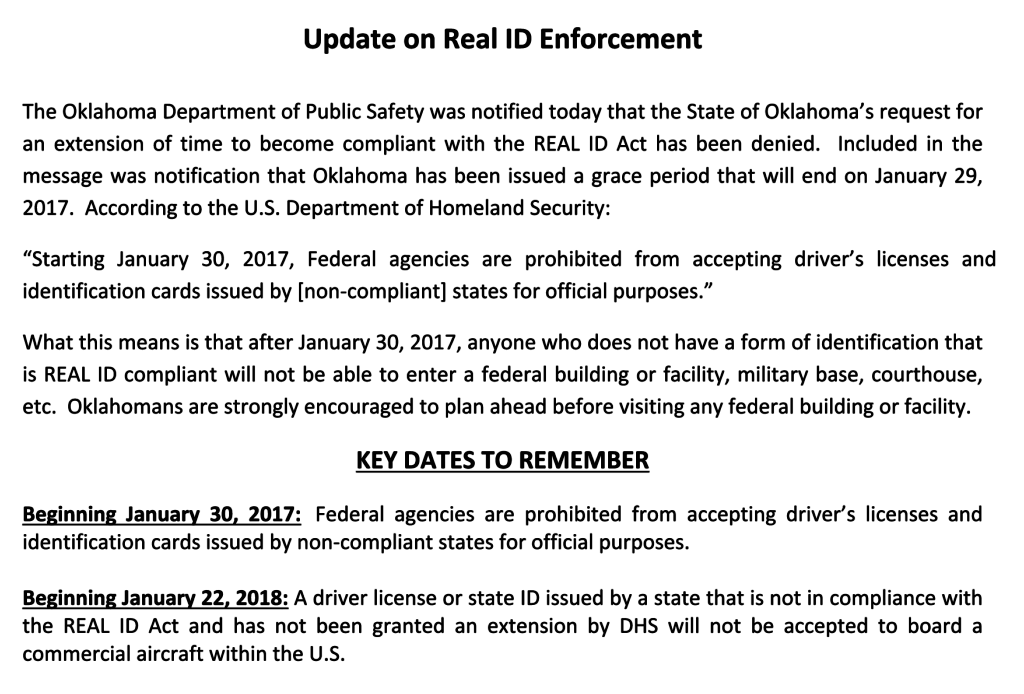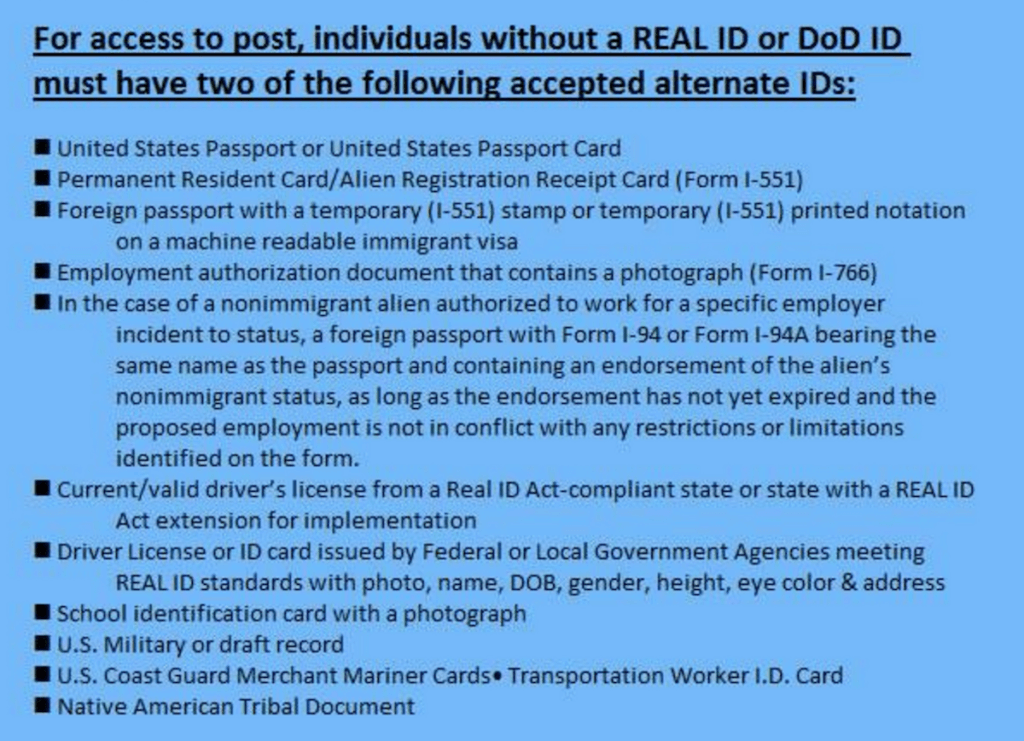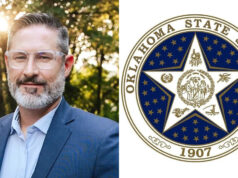
(Update: On Oct. 11, the Oklahoma Department of Public Safety released the following statement, photographed below, noting that the state had been denied its application for additional extension. As such, the “grace period” discussed in the original article below is effective immediately and will run through Jan. 29, 2017.)

(Editor’s note: The following story was originally published Monday, Oct. 3, 2016.)
Thursday morning, we published my story titled, With REAL ID still unreal in Oklahoma, deadline looms. While that headline was accurate, information included from the Associated Press and told to NonDoc by Gov. Mary Fallin’s office appears to be incorrect with regard to the REAL ID deadline, according to the Oklahoma Department of Public Safety and the U.S. Department of Homeland Security.
Jeff Hankins with OKDPS called me at about 11 a.m. Thursday to clarify that his department had not received word of a “90-day extension” for Oklahoma licenses to be accepted at military bases, as had been reported by the AP on Sept. 23.
Michael McNutt in Fallin’s office had alerted me to the AP report and noted that his understanding was that the extension only applied to accessing military bases and not other federal facilities.
But Marsha Catron of the U.S. Department of Homeland Security confirmed over the weekend that no new extensions have been granted for the 28 states and territories operating under a REAL ID extension that expires Oct. 10.
Oklahoma is one of those states.
REAL ID deadline: ‘Grace period’ versus ‘extension’
Hankins said he believes confusion about a reported “90-day extension” concerns a 90-day grace period that military bases have between the time a state becomes noncompliant and when they must begin enforcing the new ID-card standards.
“We have never heard of a grace period before this came out,” Hankins said, expressing mild exasperation with the situation. “When your extension expires, we were assuming that’s when your enforcement would take place.”
If DHS doesn’t send a letter by Oct. 10, the grace period will kick in, he said.
“Basically, we had been telling everyone Oct. 10. If we don’t get an extension, that’s when this action would take place,” Hankins said. “Then all of a sudden we hear about this 90-day grace period. It just causes more confusion for people.”
Catron was less forthcoming with details, and Homeland Security spokespeople have not agreed to do a phone interview on the topic, instead only answering questions by email.
“There haven’t been any new announcements at this time, but we will update our website and keep you in the loop,” Catron emailed Saturday.
‘I guess you could juxtapose the wording’
The confusion seems to have originated from a press release sent out by the Fort Sill Public Affairs Office on Sept. 23, the same day as the AP brief noting an “extension.” The release said:
The DHS has issued a 90-day extension to all Department of Defense installations, including Fort Sill, Altus Air Force Base, Sheppard AFB, Tinker AFB and Vance AFB in our area.
That means residents with driver’s licenses from one of the 28 non-compliant states, such as Oklahoma and Texas, can still be used at military installations until Jan. 10, 2017. On that date, Real ID enforcement will be begin.
I called Keith Pannell, the Fort Sill media relations chief, and he clarified the situation.
“We got our message direct from the DoD. That’s the phrasing we use is a 90-day extension,” Pannell said. “I guess you could juxtapose the wording. I don’t want to speak for anybody else. All I’m saying is what we got from the Department of Defense is that the wording was a 90-day extension to all Department of Defense installations.”
Whether federal agencies want to call it an “extension” or a “grace period,” Pannell emphasized and clarified the ramifications come Jan. 10.
“What it comes down to is it’s not enacted at the moment (we reach Oct. 10),” he said. “We’re putting out the information on our social media pages, our websites, our gate guards. We’re telling people with non-compliant IDs, ‘You need to have something available.'”
Pannell directed concerned parties to a list of acceptable alternative IDs listed on Fort Sill’s Fires Center of Excellence Facebook page:

He noted that the base is already disseminating information about how visitors with Oklahoma IDs could be compliant come Jan. 10, and he noted Fort Sill’s basic training graduations could be complicated if the enforcement deadline comes to pass.
“Every week, we have basic training graduations. So these moms and dads and grandparents, if they have non-compliant licenses, they are the ones who will have to be notified at home that this is going to happen,” Pannell said. “There’s already a large crowd for people getting in at the visitor’s center, so it could get a little inconvenient for people coming in after Jan. 9.”
Who would have thought …
In the end, the questions surrounding REAL ID are bountiful and, clearly, confusing. From diction to consequences, it’s apparently tough to get to the bottom of what the 10-year-old federal program means in 2016, 2017, 2018 and beyond.
On Tuesday, we will publish a letter to the editors from a Cato Institute fellow who offers his concerns about REAL ID’s implications for Americans’ privacy.
In the meantime, Homeland Security has promised to update us with any changes as the Oct. 10 deadline approaches, and we will keep an eye out for other developments between then and the potential Jan. 10 enforcement date.
Who would have thought government could be so complicated?
To clarify: That’s a joke.





















